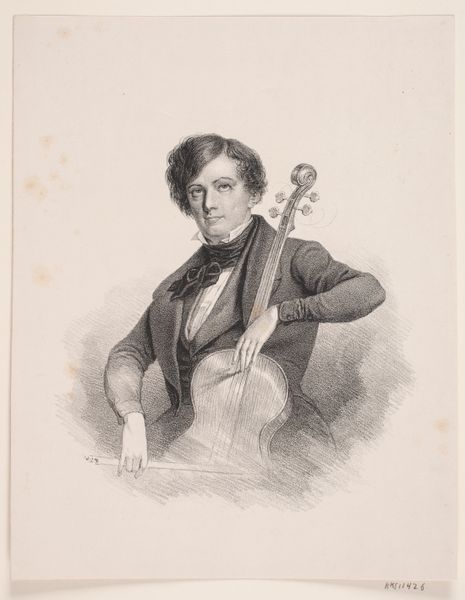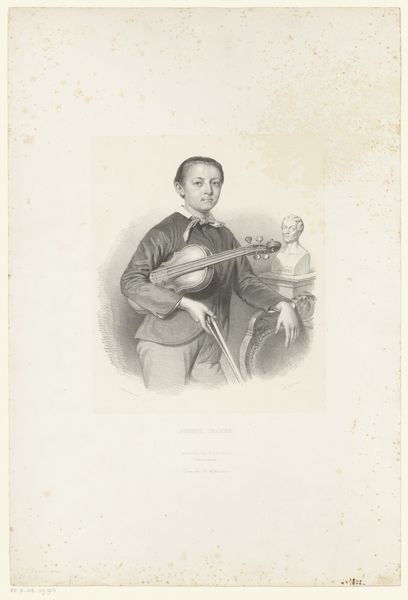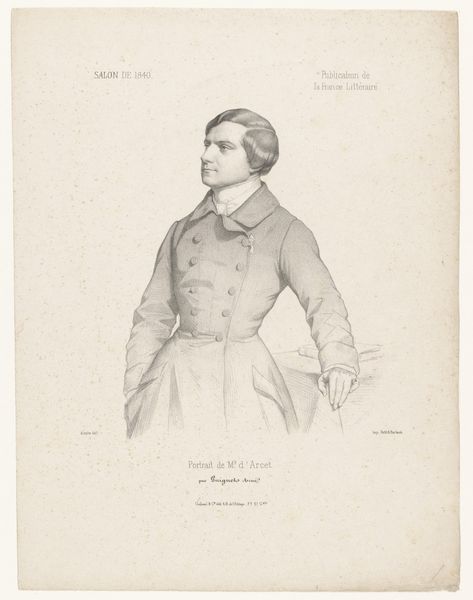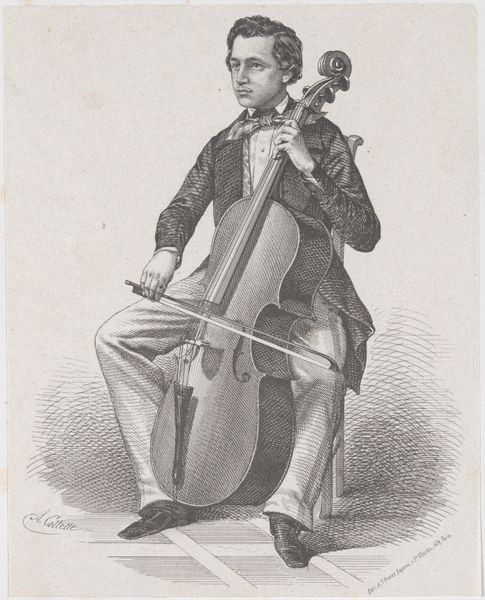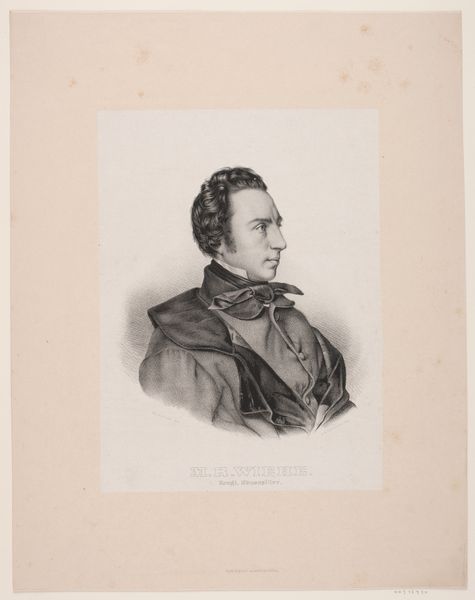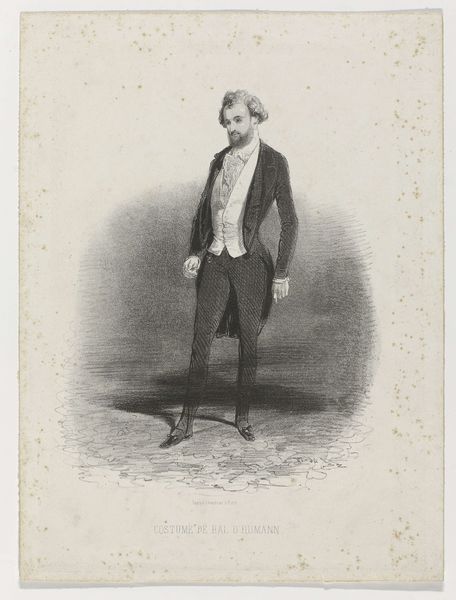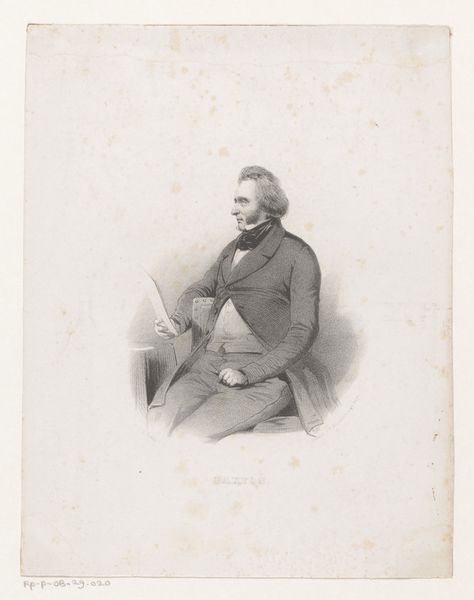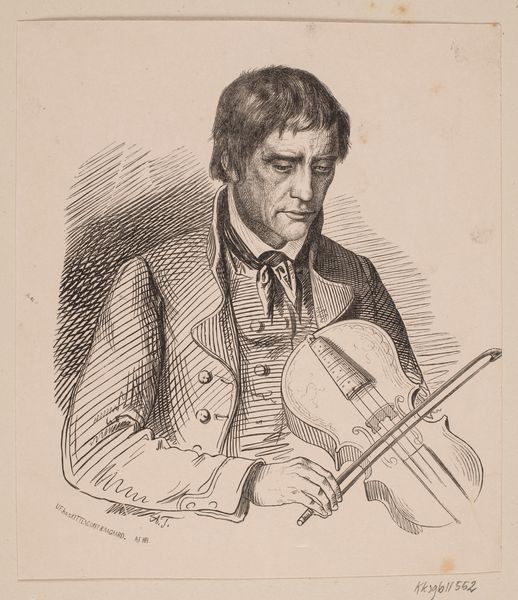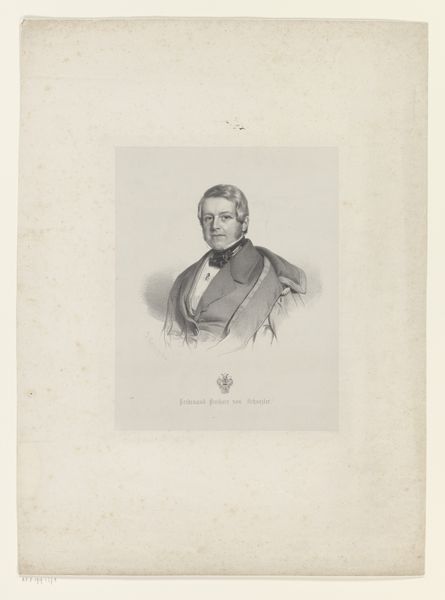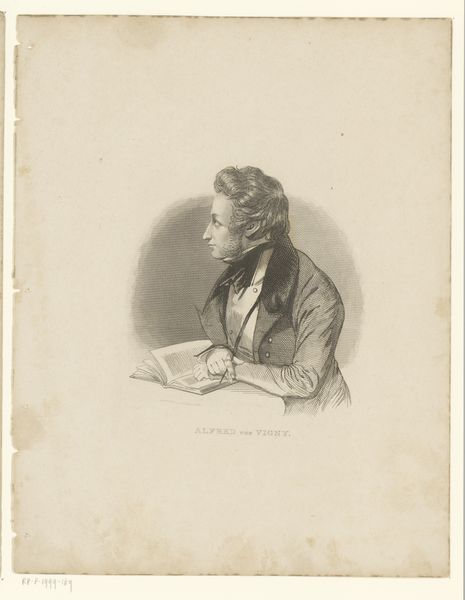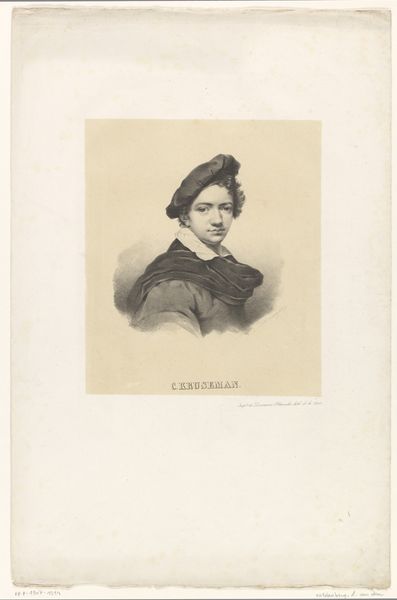
print, engraving
#
portrait
# print
#
romanticism
#
history-painting
#
engraving
Dimensions: height 569 mm, width 437 mm
Copyright: Rijks Museum: Open Domain
Editor: This is Charles Baugniet's "Portret van Adrien-François Servais" from 1838, a print made using engraving. I find it really striking how much texture and detail Baugniet achieves in this work, particularly in the depiction of fabric and hair. How do you approach analysing a piece like this from a formal perspective? Curator: My gaze is immediately drawn to the contrasting textures: the smooth paper, the rough cross-hatching defining form, the illusion of silk, of fur. These contrasts guide the viewer’s eye, do they not? Consider how the light plays across Servais’ face, achieved through careful modulation of line density. This isn’t merely representational; it’s an essay on the expressive possibilities inherent in the print medium. Editor: Absolutely, I hadn't considered it in those terms. It almost seems as if the print is celebrating the technique itself as much as the subject. Do you think the rigid pose plays a role in emphasizing this meticulous rendering? Curator: Indeed. The stiffness of the posture, arms crossed defensively, creates a visual tension, doesn’t it? This constraint is offset by the soft curls and draping scarf. This calculated arrangement of form directs our attention to the sitter's interior state, or at least the constructed idea thereof. Editor: It's interesting how Baugniet uses contrasts and precise linework to create this sort of drama within the artwork itself. It is all very methodically organised. Curator: Yes, the romantic mood arises in tension with the rigid formality of the medium. Consider the tension, the semiotics. It becomes a conversation, no? Editor: It definitely offers a fresh perspective. Thank you for helping me see all the visual considerations! Curator: The pleasure was all mine! The artwork yields to structural analysis.
Comments
No comments
Be the first to comment and join the conversation on the ultimate creative platform.
